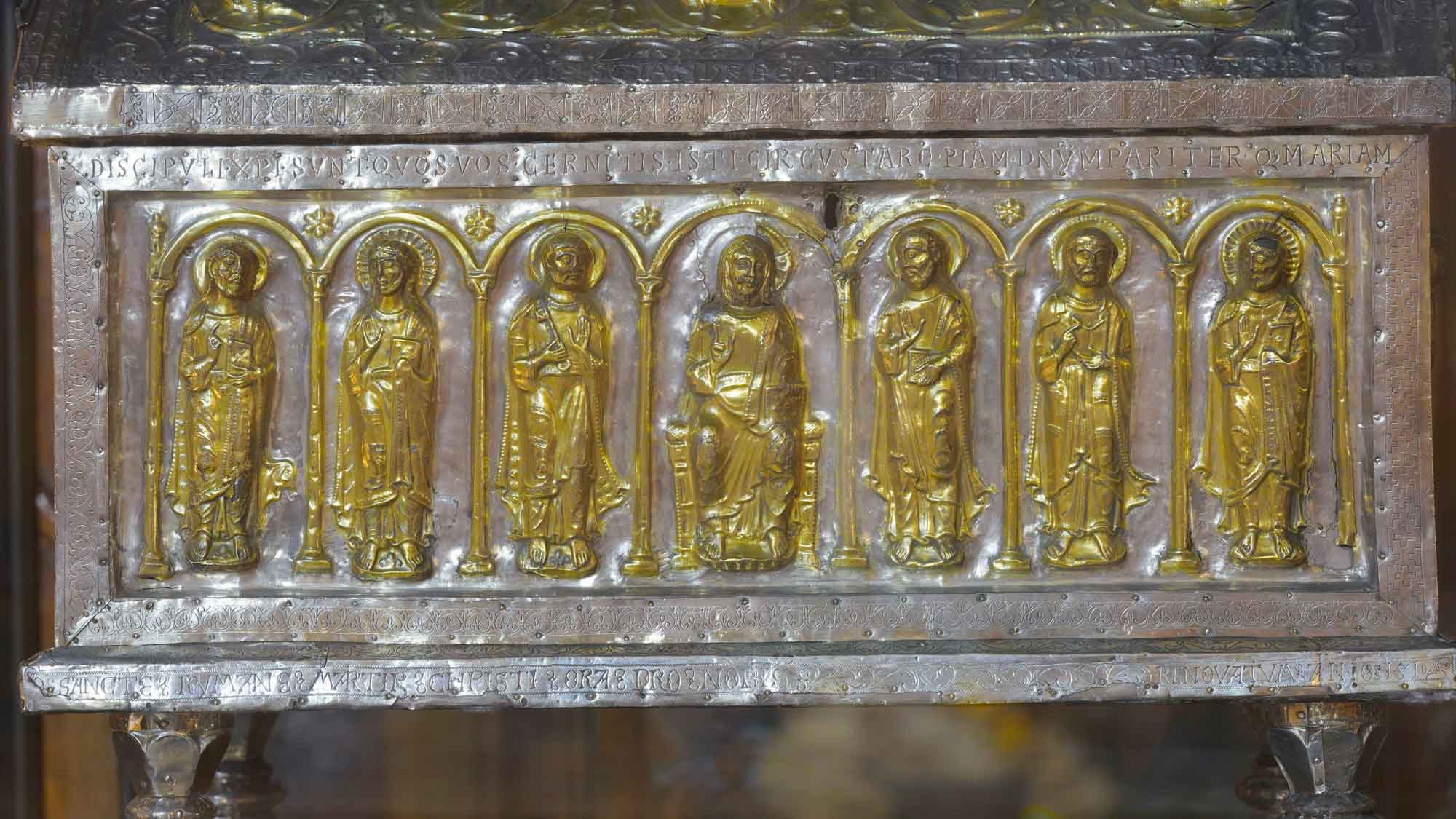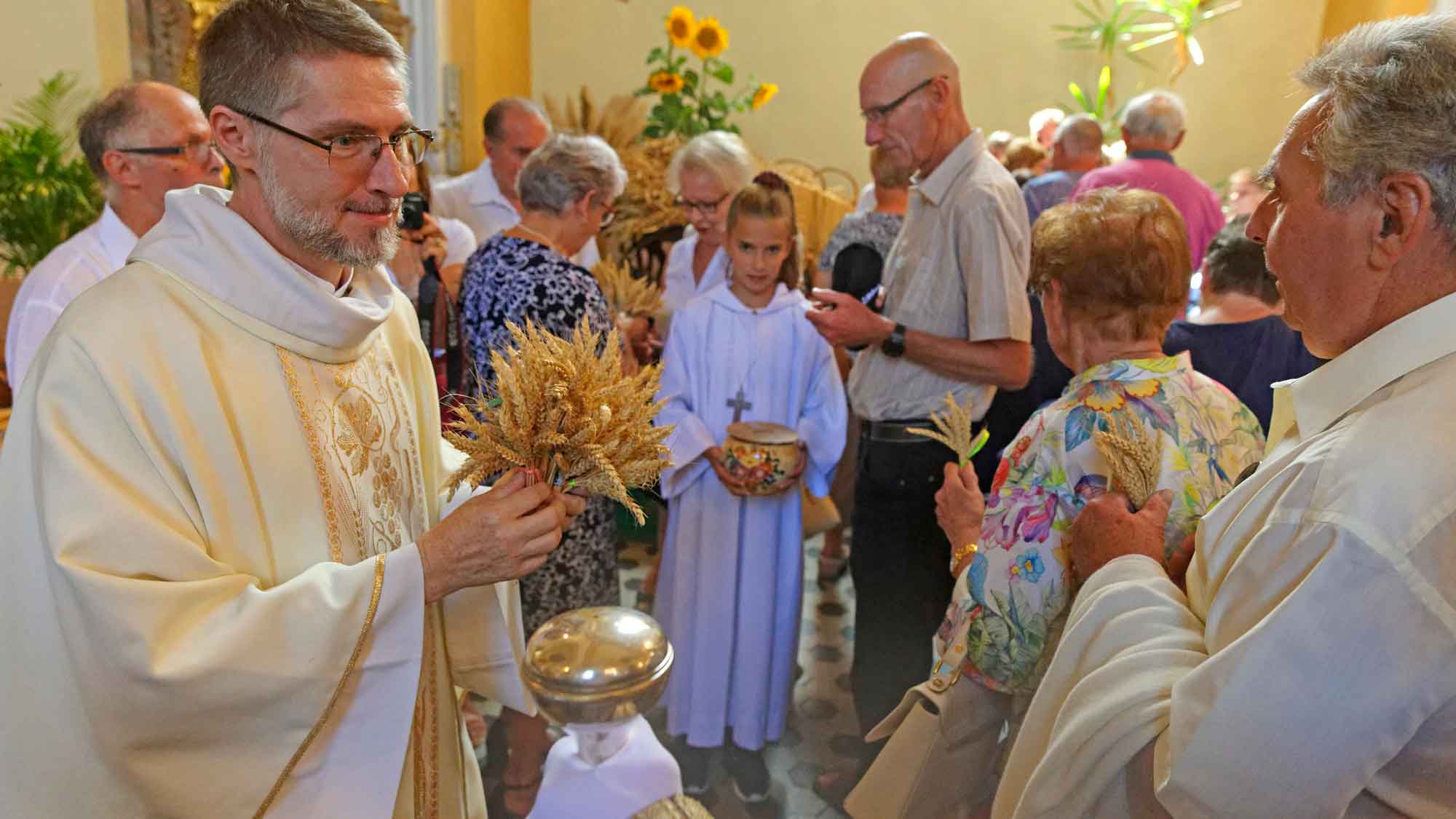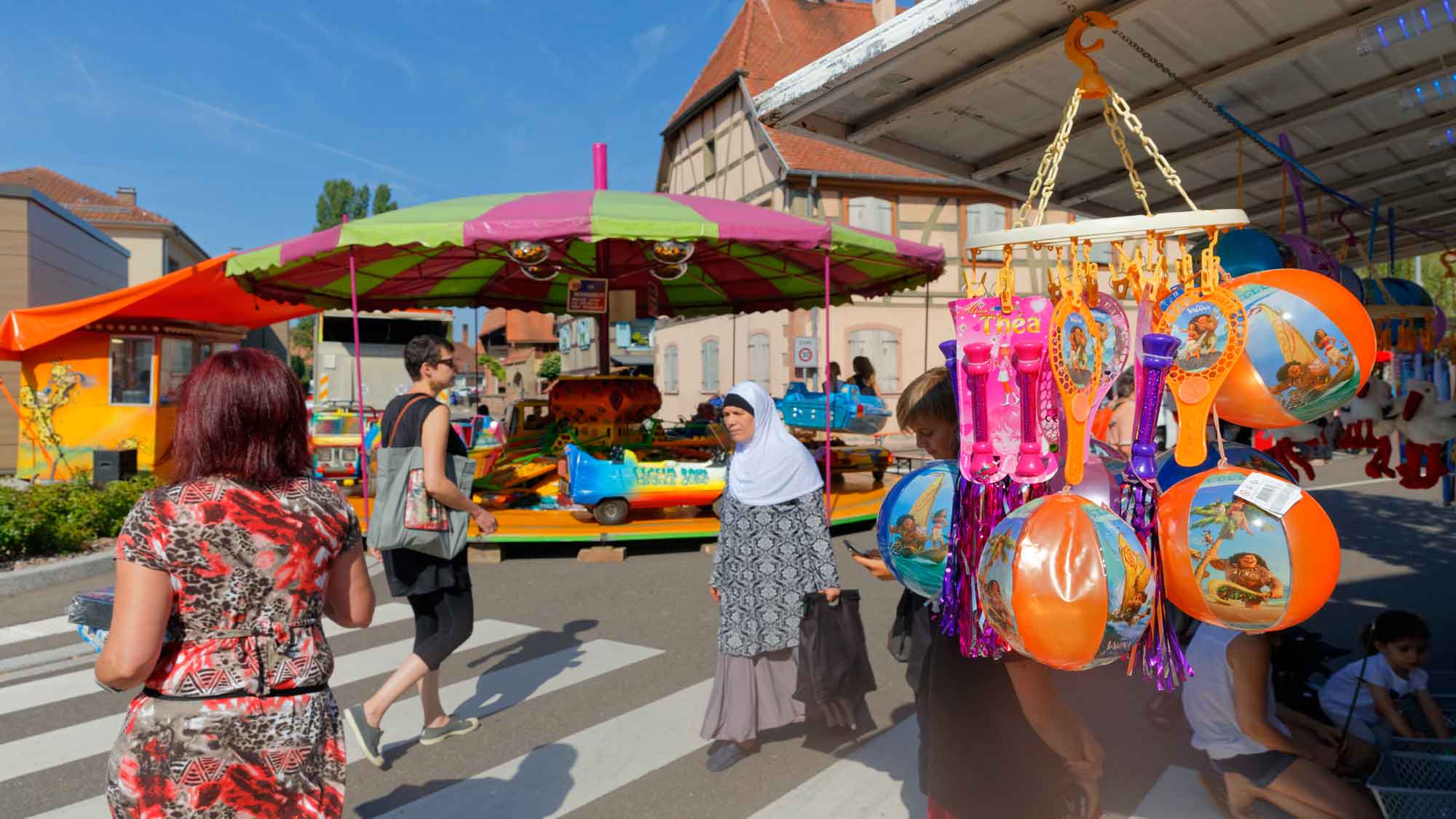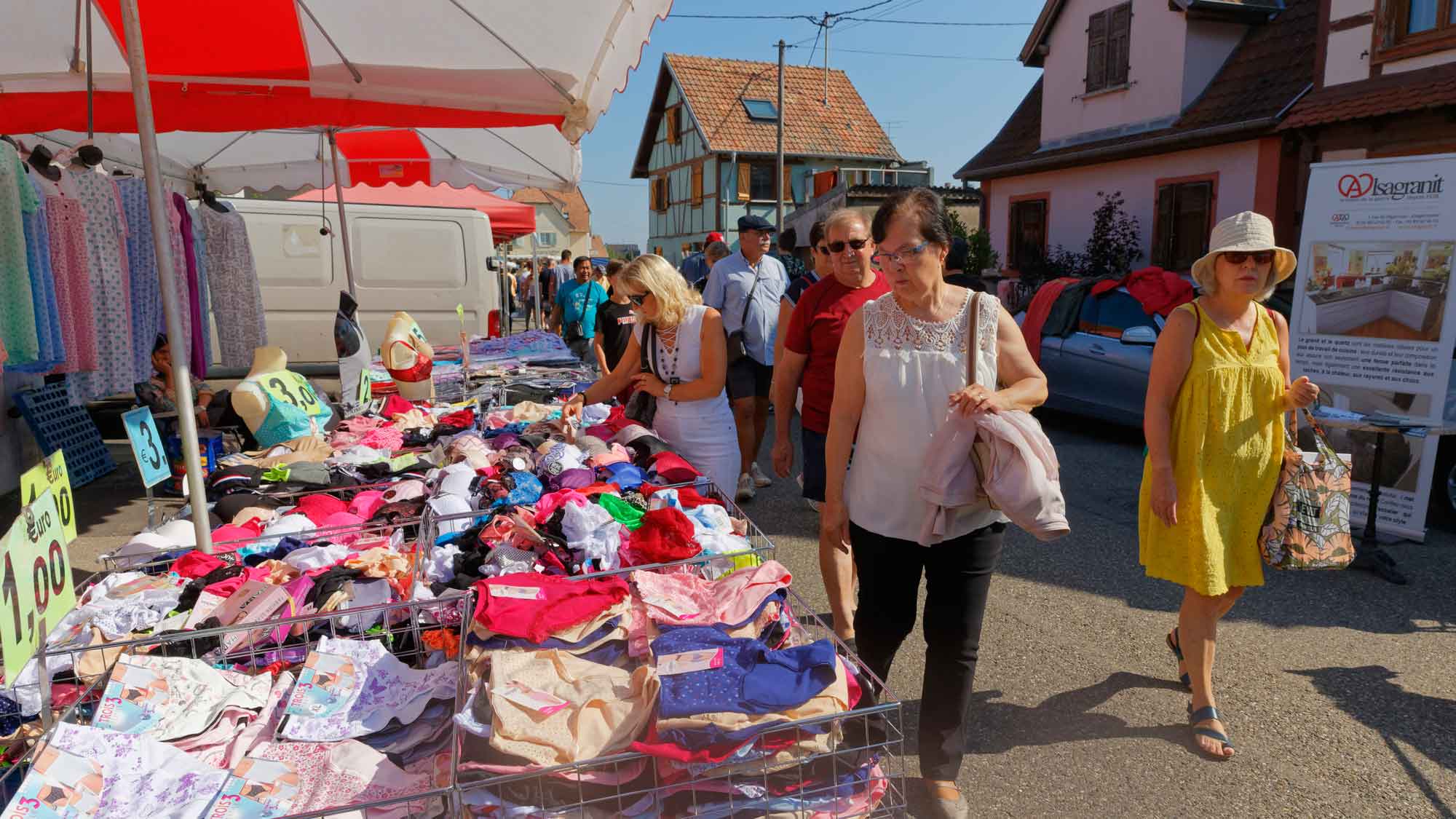The gold treasure in the village church
The precious treasure of the nearby Oelenberg monastery is located in an inconspicuous place, in Reiningue, southwest of Mulhouse. It is openly accessible in the village church, but is safely kept in armored glass showcases. One can see a bust of St. Lawrence made of gilded wood, the base of which contains ashes that are said to have come from his martyrdom. With amazement one also encounters a Gothic bust reliquary from the 15th century, which is said to represent Saint Romanus. A glazed opening in the chest catches the eye of the relic, the saint’s brain. Pope Leo IX donated these relics to the neighboring Oelenberg Monastery in the 11th century. They came here after the French Revolution and the abolition of the Convention.
The old, sealed well next to the church bears witness to the pilgrimage of earlier times. When the pilgrimage was still flourishing here and holy water was brought out of the ‘Romanus fountain’, the occasion was very popular. There is a fair in the village in our days on the first Sunday in August, the Foire Saint-Laurent. The first traders set up their market stalls at dawn, later all the streets and streets in the village centre are filled with hustle and bustle. The festival service in honor of St. Lawrence is well attended. During the mass the traditional “Glekshampfala” are blessed. Weeks before, hard-working helpers tied many ears of cereals into small bouquets, always 9 in number. The number nine and the ripe ears of corn are a double symbol of fertility. In the past, the monks of the monastery brought their harvest to the church, where it was blessed with Roman water. Today every worshiper takes home a bouquet of “Glekshampfala” as a lucky charm.







